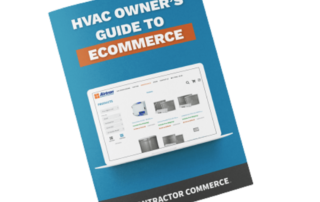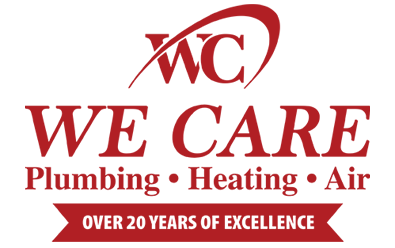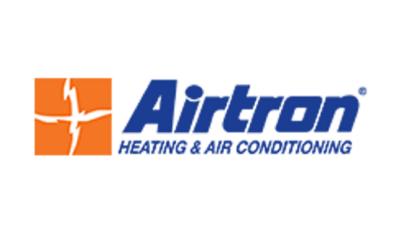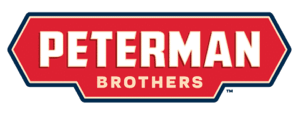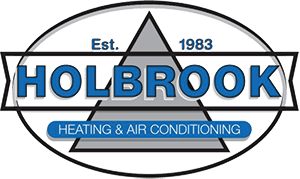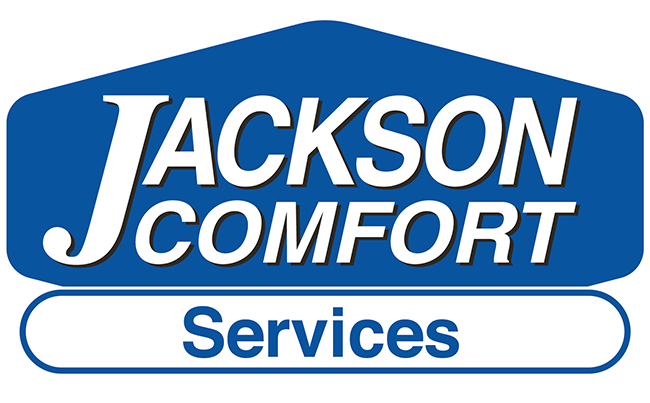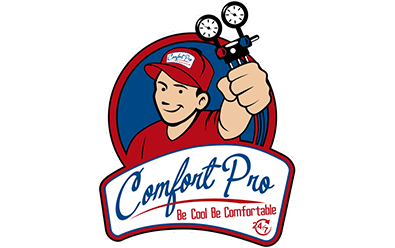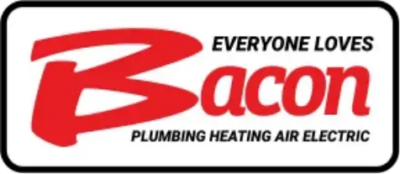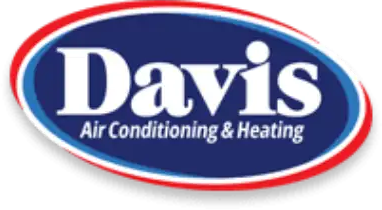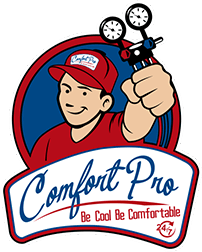The Ultimate Guide to eCommerce Conversion Optimization for Contractors
By: Will Housh
In today’s digital age, having an eCommerce website is crucial for businesses to succeed. Contractors who operate eCommerce websites face unique challenges when it comes to conversion optimization. For HVAC contractors, having a website that’s easy for users to navigate is essential, but it’s equally important to optimize for conversion. In this ultimate guide, we’ll provide actionable strategies tailored to the HVAC industry to help increase conversion rates, whether you’re selling filters, services, or fully-installed systems. We will cover everything from conducting a website audit to implementing retargeting campaigns. By the end of this guide, you will have the knowledge and tools to improve your eCommerce conversion rates and increase revenue.
Table of Contents
- Introduction
- Importance of understanding the target audience for conversion optimization
- Conducting a Website Audit
- Optimizing Your Website for Conversion
- Streamlining Your Checkout Process
- Leveraging Social Proof
- Implementing Retargeting Campaigns
- Testing and Measuring Your Efforts
- Conclusion
Optimizing an eCommerce website for conversion is important for contractors for several reasons. First, it can help increase revenue by converting more website visitors into paying customers. Second, it can help reduce the cost of customer acquisition by improving the conversion rate of existing traffic. Finally, it can help improve the overall user experience of the website, which can lead to increased customer loyalty and repeat business.
Why is eCommerce Conversion Optimization Important for Contractors?
For contractors who sell furnace filters and other products through their online store, conversion optimization is a crucial aspect of their eCommerce business. By optimizing their website for conversion, they can gain several benefits:
- Increased Revenue: By improving their conversion rates, contractors can turn more website visitors into paying customers, which can ultimately lead to increased revenue.
- Cost Savings: Instead of investing more money in acquiring new customers, improving conversion rates can help contractors reduce their customer acquisition costs by improving the conversion rate of existing traffic.
- Improved User Experience: Optimizing the website for conversion can help contractors improve the overall user experience of their website, which can lead to increased customer loyalty and repeat business.
- Competitive Advantage: Contractors who prioritize conversion optimization can gain a competitive advantage over their competitors who may not have optimized their websites for conversion.
Contractors should prioritize improving their conversion rates because it is a critical factor in the success of their eCommerce business. By optimizing their website for conversion, they can increase their revenue, reduce their customer acquisition costs, and improve the user experience of their website. In today’s highly competitive eCommerce market, conversion optimization is not an option but a necessity for contractors to thrive.

DOWNLOAD THE FREE 2024 HVAC INDUSTRY REPORT
Learn more about what’s going on in the HVAC industry and what it means to your business. Included is a list of tools to help you monitor and stand out from your competitors.
Understanding Your Target Audience
Understanding your target audience is critical for conversion optimization. When you know who your target audience is, you can tailor your website to their needs and preferences, which can lead to higher conversion rates. Here are some tips for researching your target audience:
- Create Buyer Personas: A buyer persona is a fictional representation of your ideal customer. It includes demographic information, interests, behaviors, and pain points. By creating buyer personas, you can understand your target audience’s motivations and tailor your website to their needs.
- Analyze Website Analytics: Analyzing website analytics can help you understand who is visiting your website, how they are getting there, and what they are doing on your site. This information can help you make informed decisions about how to optimize your website for conversion.
- Conduct Surveys: Surveys can provide valuable insights into your target audience’s preferences and pain points. You can use online survey tools to gather feedback from your existing customers or conduct market research to reach a broader audience.
- Monitor Social Media: Social media platforms like Twitter, Facebook, and Instagram can provide valuable insights into your target audience’s interests, behaviors, and pain points. By monitoring social media, you can identify trends and tailor your website to your audience’s needs.
Understanding your target audience is crucial for optimizing your website for conversion. By creating buyer personas, analyzing website analytics, conducting surveys, and monitoring social media, you can gain valuable insights into your audience’s preferences and tailor your website to their needs, whether they are looking to purchase furnace filters, services, or fully-installed systems. Understanding their specific needs and pain points can help you create targeted content and optimize your website’s user experience to increase conversions and customer satisfaction in the heating and cooling industry.
Conducting a Website Audit
Conducting a website audit is crucial for conversion optimization. A website audit is an evaluation of your website’s performance, functionality, and user experience. By conducting a website audit, you can identify areas for improvement and implement changes that can improve your website’s conversion rate. Here is a checklist of things to consider during a website audit:
- Page Load Times: Slow page load times can lead to high bounce rates and lower conversion rates. Use tools like Google PageSpeed Insights to evaluate your website’s page load times and identify areas for improvement.
- Mobile Responsiveness: With more people using their mobile devices to shop online, it’s essential to have a mobile-responsive website. Check your website’s responsiveness on different devices and screen sizes to ensure a seamless user experience.
- User Experience: The user experience of your website can make or break your conversion rate. Check for ease of navigation, clear calls to action, and user-friendly design.
- Website Security: Website security is critical for eCommerce websites. Ensure that your website has an SSL certificate, and all transactions are encrypted.
- Search Engine Optimization (SEO): SEO can help drive more organic traffic to your website. Check your website’s SEO elements like meta tags, page titles, and keywords to ensure they are optimized for search engines.
- Content Quality: High-quality content can keep users engaged and increase their trust in your brand. Ensure that your website has high-quality images and product descriptions.
Conducting a website audit is an essential step in optimizing your website for conversion. By evaluating page load times, mobile responsiveness, user experience, website security, SEO, and content quality, you can identify areas for improvement and implement changes that can improve your website’s conversion rate.
Optimizing Your Website for Conversion
Optimizing your website for conversion is essential for contractors who want to increase their online sales. Here are some tips for optimizing your website for conversion:
- Use Clear and Concise Messaging: Clear and concise messaging can help visitors understand what your business is offering and why they should choose your services. Use headlines, subheadings, and bullet points to convey your message effectively.
- Create a Sense of Urgency: Creating a sense of urgency can encourage visitors to take action quickly. Use limited-time offers or countdown timers to create a sense of urgency.
- Implement Trust Badges: Trust badges like SSL certificates, security seals, and customer reviews can help establish trust and credibility with visitors. Place them prominently on your website to reassure visitors that their information is safe and that you are a reputable business.
- Optimize Your Call-to-Action (CTA): Your CTA should be clear, visible, and compelling. Use action-oriented language like “Buy Now” or “Get Started” and place them prominently on your website.
- Streamline Checkout Process: A complicated checkout process can lead to cart abandonment. Simplify your checkout process by eliminating unnecessary steps, minimizing the form fields, and providing multiple payment options.
- Offer Free Shipping: Offering free shipping can encourage visitors to make a purchase. Consider offering free shipping for a minimum purchase amount or for a limited time.
Optimizing your website for conversion can increase your online sales and revenue. Contractor Commerce comes with built-in conversion rate optimization tools, making it easy for you to improve your website’s conversion rate and attract more customers without the need for additional optimization efforts. By using Contractor Commerce, you can take advantage of its pre-built features and functionalities to streamline your checkout process and enhance your website’s performance.
Streamlining Your Checkout Process
Streamlining your checkout process is essential for conversion optimization. A complicated checkout process can lead to cart abandonment and lower conversion rates. Here are some tips for optimizing your checkout process:
- Simplify the Form Fields: Simplifying the form fields can reduce the time and effort required for visitors to complete their purchase. Minimize the required fields to only the necessary information and remove any unnecessary distractions.
- Offer Multiple Payment Options: Offering multiple payment options can increase the chances of visitors completing their purchase. Consider accepting credit cards, PayPal, Apple Pay, Google Wallet, or other popular payment methods.
- Provide a Guest Checkout Option: Offering a guest checkout option can reduce friction for visitors who don’t want to create an account. Allow visitors to check out as guests without requiring them to create an account.
- Display a Progress Bar: Displaying a progress bar can give visitors a sense of how far along they are in the checkout process and what to expect next. This can reduce the feeling of uncertainty and anxiety that can lead to cart abandonment.
- Provide Shipping and Tax Calculations: Providing shipping and tax calculations upfront can eliminate surprises and reduce cart abandonment. Display the total cost, including shipping and tax, before visitors enter their payment information.
- Offer Order Confirmation: Offering order confirmation can reassure visitors that their purchase was successful and provide them with a summary of their order. Display an order confirmation page or send an email confirmation with the details of their purchase.
Streamlining your checkout process can increase your website’s conversion rate and revenue. By simplifying the form fields, offering multiple payment options, providing a guest checkout option, displaying a progress bar, providing shipping and tax calculations, and offering order confirmation, you can create a seamless checkout experience for your visitors and encourage them to complete their purchase.
Leveraging Social Proof
Leveraging social proof is crucial for conversion optimization as it helps establish trust and credibility with potential customers. Social proof refers to the influence that the actions and opinions of others have on our own behavior. For example, if your customer is in the market for a fully-installed HVAC system, receiving a quote online can be an incredibly convenient option which they may want to share on social media. Here are some examples of social proof:
- Customer Reviews and Ratings: Customer reviews and ratings are one of the most powerful forms of social proof. Positive reviews and high ratings can provide evidence that your services are reliable and trustworthy. Display customer reviews and ratings prominently on your website to make it easy for potential customers to find them.
- Testimonials: Testimonials are similar to customer reviews, but they are typically longer and more detailed. Ask satisfied customers to provide testimonials that you can use on your website. Use real names and photos to add credibility.
- Case Studies: Case studies provide detailed examples of how your services have helped other customers. Use case studies to demonstrate the value and benefits of your services.
- Social Media Followers and Engagement: Social media followers and engagement can also serve as social proof. If you have a large following on social media and high levels of engagement, this can provide evidence that your services are in demand and of high quality.
To incorporate social proof into your eCommerce website, consider the following:
- Display customer reviews and ratings prominently on your website, especially on product and service pages.
- Use real customer names and photos to add credibility to your testimonials.
- Create case studies that highlight the benefits of your services and showcase your expertise.
- Display your social media followers and engagement on your website, such as displaying your Instagram feed.
By leveraging social proof, such as customer reviews and testimonials, you can establish trust and credibility with potential customers in the service industry. This can help increase your conversion rates and drive sales of your products, services, and fully-installed system quotes.
Implementing Retargeting Campaigns
Retargeting campaigns can be a powerful tool for conversion optimization. Retargeting allows you to target users who have already shown an interest in your services but did not complete a conversion. By showing them relevant ads, you can encourage them to return to your website and complete a purchase. Here are some benefits of implementing retargeting campaigns:
- Increased Conversions: Retargeting campaigns can help you convert users who have already shown an interest in your services but did not complete a conversion. By showing them relevant ads, you can encourage them to return to your website and complete a purchase.
- Improved ROI: Retargeting campaigns can also improve your return on investment (ROI) as you are targeting users who have already shown an interest in your services, rather than targeting a cold audience.
- Better Targeting: Retargeting campaigns allow you to target specific users who have already interacted with your website. This means that you can create highly targeted ads that are more likely to resonate with your audience.
To implement retargeting campaigns for your contractor website, consider the following tips:
- Target Abandoned Cart Users: Abandoned cart users are users who have added, for example, a Lennox furnace filter to their cart but did not complete the purchase. Targeting these users with ads reminding them of the filter in their cart can encourage them to return to your website and complete the purchase.
- Use Dynamic Ads: Dynamic ads allow you to display personalized ads to users based on their previous interactions with your website. For example, you can display ads for services that a user has shown an interest in, or ads for related services.
- Set Frequency Caps: It’s important to set frequency caps to avoid overwhelming users with too many ads. You don’t want to annoy potential customers with too many ads, as this can have a negative impact on your brand.
By implementing retargeting campaigns, you can increase conversions, improve ROI, and better target potential customers who have already shown an interest in your products, services or fully-installed HVAC systems.
Testing and Measuring Your Efforts
Testing and measuring your conversion optimization efforts is essential to ensure that you are making the most of your resources and efforts. Here are some reasons why testing and measuring is important:
- Identify What Works: Testing and measuring helps you identify which strategies are working and which are not. This helps you focus on the most effective strategies and improve your conversion rates.
- Refine Your Strategy: Testing and measuring allows you to refine your strategies over time. By testing different approaches and measuring their impact, you can continually optimize your website for conversion.
- Improve ROI: Testing and measuring can also help you improve your return on investment (ROI). By identifying what works and refining your strategy, you can allocate resources more effectively and get better results from your efforts.
To test and measure your conversion optimization efforts for your contractor website, consider the following tips:
- A/B Testing: A/B testing involves creating two versions of a webpage or element and testing them against each other to see which performs better. This can be used to test different messaging, design elements, or layouts.
- Use Google Analytics: Google Analytics is a powerful tool for measuring the impact of your conversion optimization efforts. It allows you to track metrics such as bounce rates, conversion rates, and average session duration. Use this data to identify areas for improvement and measure the impact of your optimizations.
- Test Incrementally: When testing and measuring, it’s important to make changes incrementally rather than all at once. This allows you to identify which specific changes are having an impact on your conversion rates.
By testing and measuring your conversion optimization efforts using powerful tools such as A/B testing and Google Analytics, you can identify what works, refine your strategy, and improve your ROI. Additionally, if you’re using Contractor Commerce, you can access sales statistics via the dashboard, providing further insight into the effectiveness of your optimization efforts.
Conclusion
Improving eCommerce conversion rates is essential for contractors who want to succeed in the digital marketplace. By understanding your target audience, conducting a website audit, optimizing your website for conversion, streamlining your checkout process, leveraging social proof, implementing retargeting campaigns, and testing and measuring your efforts, you can improve your conversion rates and drive more sales.
We encourage all contractors to implement the strategies outlined in this guide to optimize their eCommerce websites for conversion. By doing so, you can improve your online visibility, attract more customers, and increase your revenue. With the right approach and a commitment to continuous improvement, you can achieve eCommerce success and grow your contracting business in the digital age.
In addition to the strategies outlined in this guide, contractors can also consider utilizing the services and tools offered by Contractor Commerce. Contractor Commerce provides specialized tools and services that can aid in optimizing your eCommerce website and improving your online presence. With built-in features Contractor Commerce can help you streamline your operations and provide a seamless online shopping experience for your customers. By incorporating Contractor Commerce into your eCommerce optimization efforts, you can further enhance your website’s conversion rate and grow your contracting business online.
The Ultimate Guide to eCommerce Conversion Optimization for Contractors
By: Will Housh
In today’s digital age, having an eCommerce website is crucial for businesses to succeed. Contractors who operate eCommerce websites face unique challenges when it comes to conversion optimization. For HVAC contractors, having a website that’s easy for users to navigate is essential, but it’s equally important to optimize for conversion. In this ultimate guide, we’ll provide actionable strategies tailored to the HVAC industry to help increase conversion rates, whether you’re selling filters, services, or fully-installed systems. We will cover everything from conducting a website audit to implementing retargeting campaigns. By the end of this guide, you will have the knowledge and tools to improve your eCommerce conversion rates and increase revenue.
Table Of Contents
- Introduction
- Importance of understanding the target audience for conversion optimization
- Conducting a Website Audit
- Optimizing Your Website for Conversion
- Streamlining Your Checkout Process
- Leveraging Social Proof
- Implementing Retargeting Campaigns
- Testing and Measuring Your Efforts
- Conclusion
Optimizing an eCommerce website for conversion is important for contractors for several reasons. First, it can help increase revenue by converting more website visitors into paying customers. Second, it can help reduce the cost of customer acquisition by improving the conversion rate of existing traffic. Finally, it can help improve the overall user experience of the website, which can lead to increased customer loyalty and repeat business.
Why is eCommerce Conversion Optimization Important for Contractors?
For contractors who sell furnace filters and other products through their online store, conversion optimization is a crucial aspect of their eCommerce business. By optimizing their website for conversion, they can gain several benefits:
- Increased Revenue: By improving their conversion rates, contractors can turn more website visitors into paying customers, which can ultimately lead to increased revenue.
- Cost Savings: Instead of investing more money in acquiring new customers, improving conversion rates can help contractors reduce their customer acquisition costs by improving the conversion rate of existing traffic.
- Improved User Experience: Optimizing the website for conversion can help contractors improve the overall user experience of their website, which can lead to increased customer loyalty and repeat business.
- Competitive Advantage: Contractors who prioritize conversion optimization can gain a competitive advantage over their competitors who may not have optimized their websites for conversion.
Contractors should prioritize improving their conversion rates because it is a critical factor in the success of their eCommerce business. By optimizing their website for conversion, they can increase their revenue, reduce their customer acquisition costs, and improve the user experience of their website. In today’s highly competitive eCommerce market, conversion optimization is not an option but a necessity for contractors to thrive.
Understanding Your Target Audience
Understanding your target audience is critical for conversion optimization. When you know who your target audience is, you can tailor your website to their needs and preferences, which can lead to higher conversion rates. Here are some tips for researching your target audience:
- Create Buyer Personas: A buyer persona is a fictional representation of your ideal customer. It includes demographic information, interests, behaviors, and pain points. By creating buyer personas, you can understand your target audience’s motivations and tailor your website to their needs.
- Analyze Website Analytics: Analyzing website analytics can help you understand who is visiting your website, how they are getting there, and what they are doing on your site. This information can help you make informed decisions about how to optimize your website for conversion.
- Conduct Surveys: Surveys can provide valuable insights into your target audience’s preferences and pain points. You can use online survey tools to gather feedback from your existing customers or conduct market research to reach a broader audience.
- Monitor Social Media: Social media platforms like Twitter, Facebook, and Instagram can provide valuable insights into your target audience’s interests, behaviors, and pain points. By monitoring social media, you can identify trends and tailor your website to your audience’s needs.
Understanding your target audience is crucial for optimizing your website for conversion. By creating buyer personas, analyzing website analytics, conducting surveys, and monitoring social media, you can gain valuable insights into your audience’s preferences and tailor your website to their needs, whether they are looking to purchase furnace filters, services, or fully-installed systems. Understanding their specific needs and pain points can help you create targeted content and optimize your website’s user experience to increase conversions and customer satisfaction in the heating and cooling industry.
Conducting a Website Audit
Conducting a website audit is crucial for conversion optimization. A website audit is an evaluation of your website’s performance, functionality, and user experience. By conducting a website audit, you can identify areas for improvement and implement changes that can improve your website’s conversion rate. Here is a checklist of things to consider during a website audit:
- Page Load Times: Slow page load times can lead to high bounce rates and lower conversion rates. Use tools like Google PageSpeed Insights to evaluate your website’s page load times and identify areas for improvement.
- Mobile Responsiveness: With more people using their mobile devices to shop online, it’s essential to have a mobile-responsive website. Check your website’s responsiveness on different devices and screen sizes to ensure a seamless user experience.
- User Experience: The user experience of your website can make or break your conversion rate. Check for ease of navigation, clear calls to action, and user-friendly design.
- Website Security: Website security is critical for eCommerce websites. Ensure that your website has an SSL certificate, and all transactions are encrypted.
- Search Engine Optimization (SEO): SEO can help drive more organic traffic to your website. Check your website’s SEO elements like meta tags, page titles, and keywords to ensure they are optimized for search engines.
- Content Quality: High-quality content can keep users engaged and increase their trust in your brand. Ensure that your website has high-quality images and product descriptions.
Conducting a website audit is an essential step in optimizing your website for conversion. By evaluating page load times, mobile responsiveness, user experience, website security, SEO, and content quality, you can identify areas for improvement and implement changes that can improve your website’s conversion rate.
Optimizing Your Website for Conversion
Optimizing your website for conversion is essential for contractors who want to increase their online sales. Here are some tips for optimizing your website for conversion:
- Use Clear and Concise Messaging: Clear and concise messaging can help visitors understand what your business is offering and why they should choose your services. Use headlines, subheadings, and bullet points to convey your message effectively.
- Create a Sense of Urgency: Creating a sense of urgency can encourage visitors to take action quickly. Use limited-time offers or countdown timers to create a sense of urgency.
- Implement Trust Badges: Trust badges like SSL certificates, security seals, and customer reviews can help establish trust and credibility with visitors. Place them prominently on your website to reassure visitors that their information is safe and that you are a reputable business.
- Optimize Your Call-to-Action (CTA): Your CTA should be clear, visible, and compelling. Use action-oriented language like “Buy Now” or “Get Started” and place them prominently on your website.
- Streamline Checkout Process: A complicated checkout process can lead to cart abandonment. Simplify your checkout process by eliminating unnecessary steps, minimizing the form fields, and providing multiple payment options.
- Offer Free Shipping: Offering free shipping can encourage visitors to make a purchase. Consider offering free shipping for a minimum purchase amount or for a limited time.
Optimizing your website for conversion can increase your online sales and revenue. Contractor Commerce comes with built-in conversion rate optimization tools, making it easy for you to improve your website’s conversion rate and attract more customers without the need for additional optimization efforts. By using Contractor Commerce, you can take advantage of its pre-built features and functionalities to streamline your checkout process and enhance your website’s performance.
Streamlining Your Checkout Process
Streamlining your checkout process is essential for conversion optimization. A complicated checkout process can lead to cart abandonment and lower conversion rates. Here are some tips for optimizing your checkout process:
- Simplify the Form Fields: Simplifying the form fields can reduce the time and effort required for visitors to complete their purchase. Minimize the required fields to only the necessary information and remove any unnecessary distractions.
- Offer Multiple Payment Options: Offering multiple payment options can increase the chances of visitors completing their purchase. Consider accepting credit cards, PayPal, Apple Pay, Google Wallet, or other popular payment methods.
- Provide a Guest Checkout Option: Offering a guest checkout option can reduce friction for visitors who don’t want to create an account. Allow visitors to check out as guests without requiring them to create an account.
- Display a Progress Bar: Displaying a progress bar can give visitors a sense of how far along they are in the checkout process and what to expect next. This can reduce the feeling of uncertainty and anxiety that can lead to cart abandonment.
- Provide Shipping and Tax Calculations: Providing shipping and tax calculations upfront can eliminate surprises and reduce cart abandonment. Display the total cost, including shipping and tax, before visitors enter their payment information.
- Offer Order Confirmation: Offering order confirmation can reassure visitors that their purchase was successful and provide them with a summary of their order. Display an order confirmation page or send an email confirmation with the details of their purchase.
Streamlining your checkout process can increase your website’s conversion rate and revenue. By simplifying the form fields, offering multiple payment options, providing a guest checkout option, displaying a progress bar, providing shipping and tax calculations, and offering order confirmation, you can create a seamless checkout experience for your visitors and encourage them to complete their purchase.
Leveraging Social Proof
Leveraging social proof is crucial for conversion optimization as it helps establish trust and credibility with potential customers. Social proof refers to the influence that the actions and opinions of others have on our own behavior. For example, if your customer is in the market for a fully-installed HVAC system, receiving a quote online can be an incredibly convenient option which they may want to share on social media. Here are some examples of social proof:
- Customer Reviews and Ratings: Customer reviews and ratings are one of the most powerful forms of social proof. Positive reviews and high ratings can provide evidence that your services are reliable and trustworthy. Display customer reviews and ratings prominently on your website to make it easy for potential customers to find them.
- Testimonials: Testimonials are similar to customer reviews, but they are typically longer and more detailed. Ask satisfied customers to provide testimonials that you can use on your website. Use real names and photos to add credibility.
- Case Studies: Case studies provide detailed examples of how your services have helped other customers. Use case studies to demonstrate the value and benefits of your services.
- Social Media Followers and Engagement: Social media followers and engagement can also serve as social proof. If you have a large following on social media and high levels of engagement, this can provide evidence that your services are in demand and of high quality.
To incorporate social proof into your eCommerce website, consider the following:
- Display customer reviews and ratings prominently on your website, especially on product and service pages.
- Use real customer names and photos to add credibility to your testimonials.
- Create case studies that highlight the benefits of your services and showcase your expertise.
- Display your social media followers and engagement on your website, such as displaying your Instagram feed.
By leveraging social proof, such as customer reviews and testimonials, you can establish trust and credibility with potential customers in the service industry. This can help increase your conversion rates and drive sales of your products, services, and fully-installed system quotes.
Implementing Retargeting Campaigns
Retargeting campaigns can be a powerful tool for conversion optimization. Retargeting allows you to target users who have already shown an interest in your services but did not complete a conversion. By showing them relevant ads, you can encourage them to return to your website and complete a purchase. Here are some benefits of implementing retargeting campaigns:
- Increased Conversions: Retargeting campaigns can help you convert users who have already shown an interest in your services but did not complete a conversion. By showing them relevant ads, you can encourage them to return to your website and complete a purchase.
- Improved ROI: Retargeting campaigns can also improve your return on investment (ROI) as you are targeting users who have already shown an interest in your services, rather than targeting a cold audience.
- Better Targeting: Retargeting campaigns allow you to target specific users who have already interacted with your website. This means that you can create highly targeted ads that are more likely to resonate with your audience.
To implement retargeting campaigns for your contractor website, consider the following tips:
- Target Abandoned Cart Users: Abandoned cart users are users who have added, for example, a Lennox furnace filter to their cart but did not complete the purchase. Targeting these users with ads reminding them of the filter in their cart can encourage them to return to your website and complete the purchase.
- Use Dynamic Ads: Dynamic ads allow you to display personalized ads to users based on their previous interactions with your website. For example, you can display ads for services that a user has shown an interest in, or ads for related services.
- Set Frequency Caps: It’s important to set frequency caps to avoid overwhelming users with too many ads. You don’t want to annoy potential customers with too many ads, as this can have a negative impact on your brand.
By implementing retargeting campaigns, you can increase conversions, improve ROI, and better target potential customers who have already shown an interest in your products, services or fully-installed HVAC systems.
Testing and Measuring Your Efforts
Testing and measuring your conversion optimization efforts is essential to ensure that you are making the most of your resources and efforts. Here are some reasons why testing and measuring is important:
- Identify What Works: Testing and measuring helps you identify which strategies are working and which are not. This helps you focus on the most effective strategies and improve your conversion rates.
- Refine Your Strategy: Testing and measuring allows you to refine your strategies over time. By testing different approaches and measuring their impact, you can continually optimize your website for conversion.
- Improve ROI: Testing and measuring can also help you improve your return on investment (ROI). By identifying what works and refining your strategy, you can allocate resources more effectively and get better results from your efforts.
To test and measure your conversion optimization efforts for your contractor website, consider the following tips:
- A/B Testing: A/B testing involves creating two versions of a webpage or element and testing them against each other to see which performs better. This can be used to test different messaging, design elements, or layouts.
- Use Google Analytics: Google Analytics is a powerful tool for measuring the impact of your conversion optimization efforts. It allows you to track metrics such as bounce rates, conversion rates, and average session duration. Use this data to identify areas for improvement and measure the impact of your optimizations.
- Test Incrementally: When testing and measuring, it’s important to make changes incrementally rather than all at once. This allows you to identify which specific changes are having an impact on your conversion rates.
By testing and measuring your conversion optimization efforts using powerful tools such as A/B testing and Google Analytics, you can identify what works, refine your strategy, and improve your ROI. Additionally, if you’re using Contractor Commerce, you can access sales statistics via the dashboard, providing further insight into the effectiveness of your optimization efforts.
Conclusion
Improving eCommerce conversion rates is essential for contractors who want to succeed in the digital marketplace. By understanding your target audience, conducting a website audit, optimizing your website for conversion, streamlining your checkout process, leveraging social proof, implementing retargeting campaigns, and testing and measuring your efforts, you can improve your conversion rates and drive more sales.
We encourage all contractors to implement the strategies outlined in this guide to optimize their eCommerce websites for conversion. By doing so, you can improve your online visibility, attract more customers, and increase your revenue. With the right approach and a commitment to continuous improvement, you can achieve eCommerce success and grow your contracting business in the digital age.
In addition to the strategies outlined in this guide, contractors can also consider utilizing the services and tools offered by Contractor Commerce. Contractor Commerce provides specialized tools and services that can aid in optimizing your eCommerce website and improving your online presence. With built-in features Contractor Commerce can help you streamline your operations and provide a seamless online shopping experience for your customers. By incorporating Contractor Commerce into your eCommerce optimization efforts, you can further enhance your website’s conversion rate and grow your contracting business online.
Contractor Commerce helps HVAC companies implement online stores so they can boost sales, transform their marketing efforts and grow their customer base. Learn how we can help improve your business today.
TRUSTED BY HUNDREDS OF CONTRACTORS
“It’s really easy to set up. I had an online store and was selling products within 48 hours of talking to these guys.”
“The Contractor Commerce team has been easy to work with and has even customized a few things to fit the needs of my business!”
“We have several subscription customers already. This just means recurring revenue for us with no additional overhead or managing.”
RECOMMENDED FOR YOU:
Industry-Leading Contractors Use Contractor Commerce
“The fact is, consumers would rather shop online than in person. If you don’t build an e-commerce presence, you won’t have the opportunity. Now is the time.”
“It was scary-easy to get set up. It’s plug and play. I drive people to the site, and I collect on the backend. Contractor Commerce takes the order, processes the order, and ships it…any HVAC company would be crazy not to start an online store with Contractor Commerce.”
“Working with the Contractor Commerce team is simple. It’s great. They’re understanding, and they will do anything possible in their power to accommodate your needs. It’s an added service for us…it’s good for our customers”
“Having our website store powered by Contractor Commerce gives us a unique competitive advantage in our market. Our friends in the industry look at our website and say, ‘Wow! That’s super cool. I don’t know why my company isn’t doing this.”
“Having an online store from Contractor Commerce is great for our customers! It is convenient and easy for customers to order filters. It saves time when they can go right to the website, place their order and have the filter delivered within a couple of days. Plus, the Contractor Commerce team is great to work with. They are very responsive and helpful and I know they really care about my success!”
“It’s really easy to set up. I had an online store and was selling products within 48 hours of talking to these guys.”
“The Contractor Commerce team has been easy to work with and has even customized a few things to fit the needs of my business!”
“We have several subscription customers already. This just means recurring revenue for us with no additional overhead or managing.”


